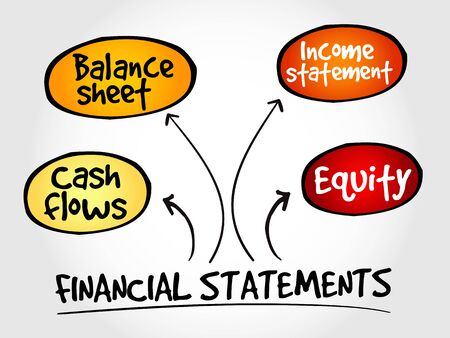Understanding Spousal and Survivor Benefits
When planning for retirement, it’s essential to understand how spousal and survivor benefits fit into the Social Security system. These benefits are designed to provide financial support to married couples and widowed individuals, helping families maintain stability in retirement or after the loss of a loved one. To qualify for spousal benefits, your spouse must be eligible for Social Security retirement or disability benefits, and you generally need to be at least age 62. The spousal benefit can be as much as 50% of your spouse’s full retirement amount, depending on when you claim. For survivor benefits, eligibility usually applies if you are a widow or widower of someone who worked long enough under Social Security. You may receive reduced survivor benefits as early as age 60 (or age 50 if disabled), or full benefits at your full retirement age. Benefit calculations take into account the worker’s earnings record, your age when claiming, and whether you’re also eligible for your own Social Security benefit. Understanding these rules is a key first step in building a smart Social Security strategy that supports your family’s long-term financial well-being.
Claiming Strategies for Couples
For married couples, planning when and how to claim Social Security benefits can have a significant impact on your household’s long-term financial well-being. Knowing the rules for spousal and survivor benefits gives you more flexibility—and potentially more income—throughout retirement. Here are some practical strategies and tips to help you make the most of your Social Security benefits as a couple.
Understanding Spousal Benefits
Spousal benefits allow one spouse to claim up to 50% of the other spouse’s full retirement age (FRA) benefit, even if they have little or no work history of their own. To qualify, the primary earner must have already filed for their own benefit. It’s important to remember that claiming before your FRA will result in a permanently reduced benefit for both the worker and the spouse.
Coordinating Claiming Ages for Maximum Income
One of the most effective ways for couples to maximize total household Social Security income is by coordinating when each spouse claims benefits. Often, it pays for the higher-earning spouse to delay their own benefit as long as possible (up to age 70), allowing their monthly payment—and any survivor benefit—to grow. Meanwhile, the lower-earning spouse can claim either their own benefit or a spousal benefit at an earlier age if needed.
Comparison Table: Claiming Strategies for Couples
| Strategy | Who Should Consider? | Potential Benefit | Caveats |
|---|---|---|---|
| Early Claiming (Both at 62) | Couples needing immediate income | Sooner access to cash flow | Permanently reduced monthly benefits |
| Staggered Claiming (Lower Earner Early, Higher Earner Delayed) | Higher earner with good health/longevity | Larger survivor benefit; higher overall household income | Requires other income sources while waiting |
| Both Delay to FRA or Later | Couples with strong savings or late retirement plans | Maximum monthly benefit for both spouses | No Social Security income until later years |
| File and Suspend (If Eligible) | Certain couples born before Jan 2, 1954* | Allows spousal benefits while worker’s grows | No longer available for those born after cutoff date |
*Special rules apply—check eligibility with the SSA or your financial advisor.
Practical Tips for Couples Planning Together
- Review your earnings records: Check both spouses’ Social Security statements for accuracy and projected benefits.
- Run multiple scenarios: Use online calculators or consult an advisor to see how different claiming ages affect total household income over time.
- Consider longevity: If one or both spouses expect to live well into their 80s or beyond, delaying benefits may result in greater lifetime income.
- Plan for survivor needs: The surviving spouse receives the higher of the two benefit amounts—delaying can significantly increase this safety net.
- Coordinate with other retirement resources: Factor in pensions, IRAs, and 401(k)s when deciding when to start Social Security.
A thoughtful claiming strategy can make all the difference in your retirement lifestyle. By understanding your options and planning together, couples can help ensure a more secure financial future.

3. Impact on Retirement Timing
Deciding when to start taking Social Security benefits is one of the most important choices couples face in retirement planning, and spousal and survivor benefits can play a big role in shaping this decision. For many American families, timing isn’t just about personal preference or hitting a certain birthday—it’s about making the most of every dollar available for your household’s long-term financial security. Spousal benefits allow one spouse to claim up to 50% of the other’s full retirement benefit, which can be especially valuable if one partner earned significantly less over their career. This means that delaying your own claim may increase your eventual monthly payment, but it could also unlock higher spousal payments for your husband or wife in the meantime. Survivor benefits add another layer of complexity: when one spouse passes away, the surviving spouse can generally step up to receive the higher of their own benefit or their late spouse’s benefit. Because of this, couples often consider having the higher-earning spouse delay claiming Social Security as long as possible—up to age 70—to maximize survivor benefits down the road. In practice, this could mean staggering when each partner starts collecting benefits instead of both starting at the same time. By coordinating your Social Security strategies as a couple and factoring in both spousal and survivor options, you can help ensure more stability for both partners throughout retirement—and leave fewer dollars on the table.
4. Planning for Widows and Widowers
When it comes to Social Security planning, widows and widowers face unique challenges and opportunities. Understanding how survivor benefits work—and when to switch from spousal to survivor benefits—can make a significant difference in your long-term financial security. Here are some key considerations and options for surviving spouses.
Important Considerations for Surviving Spouses
- Eligibility: Surviving spouses may be eligible for survivor benefits as early as age 60 (or age 50 if disabled). If you’re caring for a child under 16 or disabled, you can claim at any age.
- Benefit Amount: Survivor benefits are based on the deceased spouse’s work record. The longer your spouse worked and the higher their earnings, the larger the benefit you may receive.
- Remarriage: Remarrying before age 60 generally disqualifies you from receiving survivor benefits. However, if you remarry after turning 60 (or 50 if disabled), you can still collect survivor benefits.
Transitioning from Spousal to Survivor Benefits
If you were already receiving spousal benefits before your spouse passed away, you have the option to switch to survivor benefits. Timing this transition is important because it can affect the monthly amount you receive. Here’s a quick comparison to help with your planning:
| Option | Eligibility Age | Monthly Benefit Amount |
|---|---|---|
| Spousal Benefit | 62+ | Up to 50% of spouse’s PIA* |
| Survivor Benefit | 60+ (50+ if disabled) | Up to 100% of deceased spouse’s benefit |
*PIA = Primary Insurance Amount
You don’t have to claim both at the same time; sometimes, it makes sense to start with one and switch later. For example, a widow might begin with her own retirement benefit at age 62, then switch to a higher survivor benefit at full retirement age. This strategy can maximize lifetime Social Security income.
Other Factors to Keep in Mind
- If you continue working while collecting survivor benefits before your full retirement age, your benefits could be reduced due to the earnings limit.
- If you qualify for both your own benefit and a survivor benefit, Social Security will pay the higher of the two amounts—not both.
The rules surrounding spousal and survivor benefits can be complex, but making informed decisions about when and how to claim them is crucial for widows and widowers. Consulting with a financial advisor who understands Social Security’s nuances can help you optimize your benefits for lasting financial stability.
5. Financial Implications and Budget Planning
Understanding how spousal and survivor benefits impact your Social Security strategy is key to building a retirement plan that works for your family’s unique needs. These benefits can provide a steady income stream, but it’s important to see how they fit into your entire financial picture—not just Social Security, but also savings, pensions, investments, and potential part-time work.
Integrating Benefits into Your Monthly Budget
When you’re mapping out your monthly retirement budget, start by estimating the combined Social Security income from your own record plus any spousal or survivor benefits you may qualify for. Compare this amount with essential expenses like housing, healthcare, groceries, and transportation. Remember, Social Security was designed as a supplement, not a sole source of income, so knowing where it fits in helps prevent surprises down the road.
Planning for Life Changes
Your family situation can affect the timing and size of benefits. For example, if one spouse passes away, the survivor may be eligible for a higher benefit—this can make a big difference in maintaining stability after loss. It’s wise to regularly review your plan and consider “what if” scenarios as part of your long-term budgeting process.
Real-Life Example: The Smith Family
Let’s say John and Mary are planning their retirement together. John’s benefit at full retirement age is $2,000 per month; Mary didn’t work outside the home and qualifies for a spousal benefit of $1,000 per month. If John passes away first, Mary can switch to his full benefit as a survivor. Knowing this, they adjust their spending and savings now to ensure Mary will be financially secure later on.
Maximizing Peace of Mind Through Smart Planning
The bottom line? By weaving Social Security spousal and survivor benefits into your broader financial plan—and revisiting it regularly—you can help protect your household budget and maintain peace of mind throughout retirement. Consider working with a financial advisor who understands the ins and outs of these programs to make sure you’re making the most of every dollar available to your family.
6. Common Mistakes and How to Avoid Them
When it comes to Social Security planning, especially involving spousal and survivor benefits, there are several common mistakes that can end up costing families thousands of dollars over a lifetime. Understanding these pitfalls and how to sidestep them is crucial for maximizing your household’s financial security.
Misunderstanding Eligibility Rules
Many people assume they’re not eligible for spousal or survivor benefits because they haven’t worked enough or paid into Social Security themselves. However, even if you never worked outside the home, you may still qualify based on your spouse’s work record. Not checking eligibility rules carefully can mean missing out on money you’re entitled to.
Claiming Benefits Too Early
A frequent misstep is starting benefits at age 62—the earliest possible age—without considering the long-term impact. Claiming early reduces your monthly check permanently, and it can also reduce spousal and survivor benefits down the road. Sometimes waiting even a few years makes a significant difference in your family’s financial well-being.
Overlooking Survivor Benefits
Survivor benefits are often overlooked in planning, particularly by couples who focus only on their own retirement benefit amount. If one spouse passes away, the surviving spouse can receive up to 100% of the deceased’s benefit—but only if they claim at the right time and meet certain requirements. Ignoring these details can leave survivors with less than they deserve.
Not Coordinating Benefits as a Couple
Social Security strategies aren’t just about individuals; it’s about teamwork. Failing to coordinate when each spouse claims their benefit can mean leaving money on the table. For example, some couples don’t realize that one spouse can file for a spousal benefit while letting their own retirement benefit grow until age 70.
Tips for Making Informed Decisions
- Review your Social Security statement regularly and understand your estimated benefits.
- Consult with a financial planner who understands the nuances of Social Security rules.
- Consider the long-term impact of claiming ages on both your own and your spouse’s benefits.
- If divorced or widowed, ask specifically about divorced-spouse or survivor benefits—you may qualify even after remarriage under certain conditions.
Avoiding these common mistakes requires attention to detail and a willingness to seek help when needed. Taking the time now to get informed can pay off for you and your loved ones for years to come.


